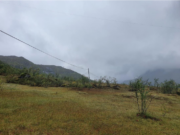
The image at top shows the configuration of Runways 28L and 28R, and Taxiway C at San Francisco International Airport. The “X” at the threshold of 28L indicates that runway was closed. The bottom image shows the four airliners that were lined up on Taxiway C as Air Canada Flight 759 approached. Source: NTSB
The pilots of an Air Canada Airbus A320 that lined up to land on occupied Taxiway C at San Francisco International Airport instead of on parallel Runway 28R to which they were cleared told the U.S. National Transportation Safety Board (NTSB) in post-incident interviews that they believed the lighted runway on their left was Runway 28L and that they were lined up for the proper runway. They also told investigators that they did not recall seeing aircraft on Taxiway C, “but that something did not look right to them,” NTSB said in an investigative update released Wednesday.
The investigative update does not provide probable cause for the incident and does not contain analysis of the information collected so far in NTSB’s investigation, the agency said. The incident aircraft got as low as 59 ft above ground level (AGL) before completing a successful go-around.
The July 7 incident involved Air Canada Flight 759 (AC 759) from Toronto to San Francisco. The captain, who had over 20,000 total flight hours, including nearly 4,800 as captain in an A320, was the pilot flying, and the co-pilot, who had about 10,000 total flight hours, was the pilot monitoring. Night visual meteorological conditions prevailed at the time of the incident.
At about 2356 local time, AC 759 was cleared to land on Runway 28R, but during the final 3 nm (6 km) of the approach, the airplane’s flightpath was lined up with the taxiway and maintained the runway heading. At the time, four airplanes were lined up on the taxiway awaiting takeoff clearance: United Flight 1 (UAL 1), a Boeing 787; Philippine Airlines Flight 115 (PAL 115), an A340; United Flight 863 (UAL 863), a 787; and United Flight 1118 (UAL 1118), a 737.
At the time of the incident, Runway 28L, which runs parallel to 28R on the opposite side of 28R from Taxiway C, was closed to accommodate construction, its approach and runway lights were turned off, and a 20.5-ft (6.3-m) wide flashing X was placed at the threshold. The construction project started in February, and notices to airmen had been issued to alert operators to the runway’s operational status.
About 0.7 nm (1.3 km) from the landing threshold and about 300 ft AGL, the flight crew contacted the air traffic control (ATC) tower, mentioned seeing lights on the runway and requested confirmation that they were cleared to land. About 10 seconds later, when AC 759 was about 0.3 nm (0.6 km) from the threshold, the local controller confirmed and re-cleared the flight to land on 28R.
The flight crew of UAL 1, the first airplane in the queue on Taxiway C, transmitted that AC 759 was lined up with the taxiway. The flight crew of the second plane in the queue, PAL 115, turned on their plane’s landing lights as AC 759 approached.
The AC 759 pilots advanced the thrust levers for a go-around when their airplane was over the taxiway and about 85 ft AGL, NTSB said. About 2.5 seconds after the thrust levers were advanced, the minimum altitude recorded on the flight data recorder was 59 ft AGL. The airplane had already begun to climb when ATC directed the pilots to go around.
The incident was reported to NTSB on July 9. The incident airplane’s cockpit voice recorder had been overwritten, so NTSB investigators do not have that data.
Normal staffing for the ATC tower on the midnight shift included two controllers, but on the evening of the incident, one controller was in the tower cab, and seven minutes before the incident, all positions in the tower were combined at the local controller position, NTSB said.



